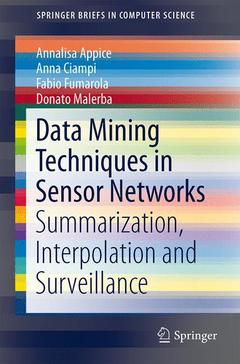Description
Data Mining Techniques in Sensor Networks, 2014
Summarization, Interpolation and Surveillance
SpringerBriefs in Computer Science Series
Authors: Appice Annalisa, Ciampi Anna, Fumarola Fabio, Malerba Donato
Language: English
Subjects for Data Mining Techniques in Sensor Networks:
Approximative price 52.74 €
In Print (Delivery period: 15 days).
Add to cart105 p. · 15.5x23.5 cm · Paperback
Description
/li>Contents
/li>Comment
/li>
Introduction
Sensor Networks and Data Streams: Basics
Geodata Stream Summarization
Missing Sensor Data Interpolation
Sensor Data Surveillance
Sensor Data Analysis Applications
Introduces the trend cluster, a recently defined spatio-temporal pattern, and its use in summarizing, interpolating and identifying anomalies in sensor networks
Illustrates the application of trend cluster discovery to monitor the efficiency of photovoltaic power plants
Discusses new possibilities for surveillance enabled by recent developments in sensing technology




